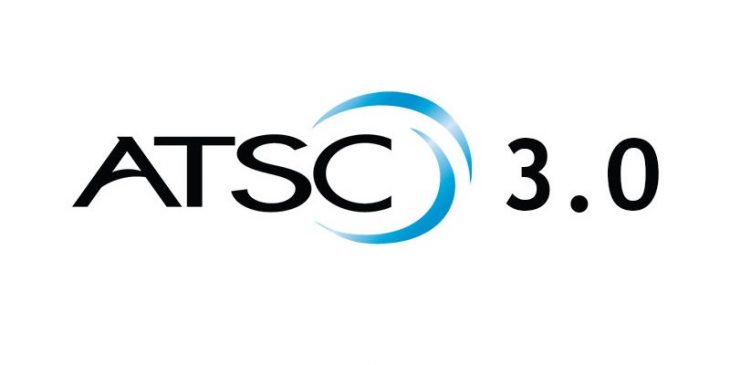
New standard would make broadcasters interactive and targeted
LAS VEGAS – About a year after the formal launch of the next-gen broadcast TV transmission standard, ATSC 3.0, major U.S. broadcasters are mobilizing to roll out the new technology across the nation over the next 20 months.
Appearing at a press conference during the National Association of Broadcasters Show in Las Vegas last week that turned into a lovefest for the new technology, a broad coalition of broadcast TV station groups announced plans to deploy the ATSC 3.0 standard in the top 40 U.S. markets by the end of 2020. The TV station groups include Fox Television Stations, NBC Universal, Univision, Spectrum Co. and the Pearl TV Group.
These planned deployments will follow the initial rollouts and field trials that broadcasters are now conducting in a number of U.S. markets. The list of pioneering markets includes Phoenix, Dallas, Baltimore, Cleveland, Raleigh, N.C. and Santa Barbara, Calif.
Championed by broadcasters, emergency alert groups and consumer electronics makers, ATSC 3.0 technology is designed to enable over-the-air TV stations to deliver targeted advertising and alerts, video-on-demand services, interactive features, 4K UHD TV, mobile video and other IP-based services to consumers. Among other things, industry observers expect the new standard to drive sales of 4K TV sets because it will support the delivery of higher-resolution pictures to homes.
(Ed note: Canadian broadcasters have made no announcements as yet about moving to this new standard.)
"America's broadcasters are on the cusp of a revolution in television," declared NAB president and CEO Gordon Smith, speaking at the press conference. "Today and this show is the end of the beginning, as far as I'm concerned."
Members of the broadcast coalition indicated that the first wave of ATSC 3.0 launches will unfold in several still-undisclosed markets later this year. Although the participating broadcasters have already selected the first stations that will make the switch over to the new digital broadcast standard, their decisions are still subject to final engineering and other approvals, including regulatory license modifications by the FCC.
"This is real; this is happening this year," said John Hane, CEO of Spectrum Co., whose members include Sinclair Broadcast Group and Nexstar Media Group. "The world is mobile; people are moving."
With the expected benefits noted above, broadcasters hope that they will be better able to compete with pay-TV providers, OTT video providers and especially Internet players for viewers, advertisers and revenue. Some go as far as to claim that the future of the broadcast TV industry is riding on the successful deployment of ATSC 3.0.
"At this point in history, [ATSC] 3.0 really is ready for deployment, and it's time for this industry to get out of its own way," David Smith, chairman of Sinclair Broadcast Group (not to be confused with Gordon Smith) declared during the press event. Accordingly, he urged other broadcasters to get moving on their deployments.
“The data [from ATSC 3.0] will probably be the sole opportunity that keeps us afloat for the next generation.” – David Smith, Sinclair Broadcast Group
"3.0 is the single biggest opportunity available to the broadcast industry," he said. "Let's do something."
While ATSC 3.0 promises to bring better pictures and sound to TV sets, tablets, smartphones, other video devices and connected cars, David Smith argued that the usage data collected from the new standard would be critical for broadcasters, allowing them to offer relevant, targeted advertising. Without that ability, he said, broadcasters would remain "encumbered" by their use of legacy Nielsen viewing diaries, which are still filled out by hand and are extremely limited in scope.
"The data [from ATSC 3.0] will probably be the sole opportunity that keeps us afloat for the next generation," Smith said. He emphasized that the broadcast TV industry needs to take a page from Google 's book in collecting and marketing its valuable data. "Our world revolves around data," he said.
Smith ticked off other reasons for broadcasters to embrace ATSC 3.0 as well. He argued the ability to tack on subscription-based services and reach all video screens – both fixed and mobile, inside the home and out – with ATSC 3.0 signals will also prove critical to the industry's future.
Broadcasters need to "talk to every device in the marketplace," he said. "We have to be able to talk to cars… We need direct access to the consumer who spends the money."
At the NAB Show press event last week, coalition members also showed off an ATSC 3.0 radio head that can be mounted on cell towers. Organizers estimate that a single 3.0 radio head can cover a 12-mile radius from a 100-foot or 150-foot tower. A study in Baltimore indicated that 50 or 60 radio heads could properly cover that entire metro market.
In other ATSC 3.0 news announced at the NAB Show, a U.S. delegation proposed that the ATSC 3.0 standard be adopted by all other countries. The proposal, developed by the Advanced Television Systems Committee, has been submitted to the International Telecommunications Union's (ITU's) Radio Communications Sector, which develops and maintains worldwide recommendations, reports and handbooks on broadcasting services.
That goal, however, remains a tall task, since only the U.S. and South Korea have adopted the ATSC 3.0 standard so far. The Advanced Television Systems Committee said it expects to see "accelerated action" on the U.S. proposal at the next ITU working party meetings in July.



